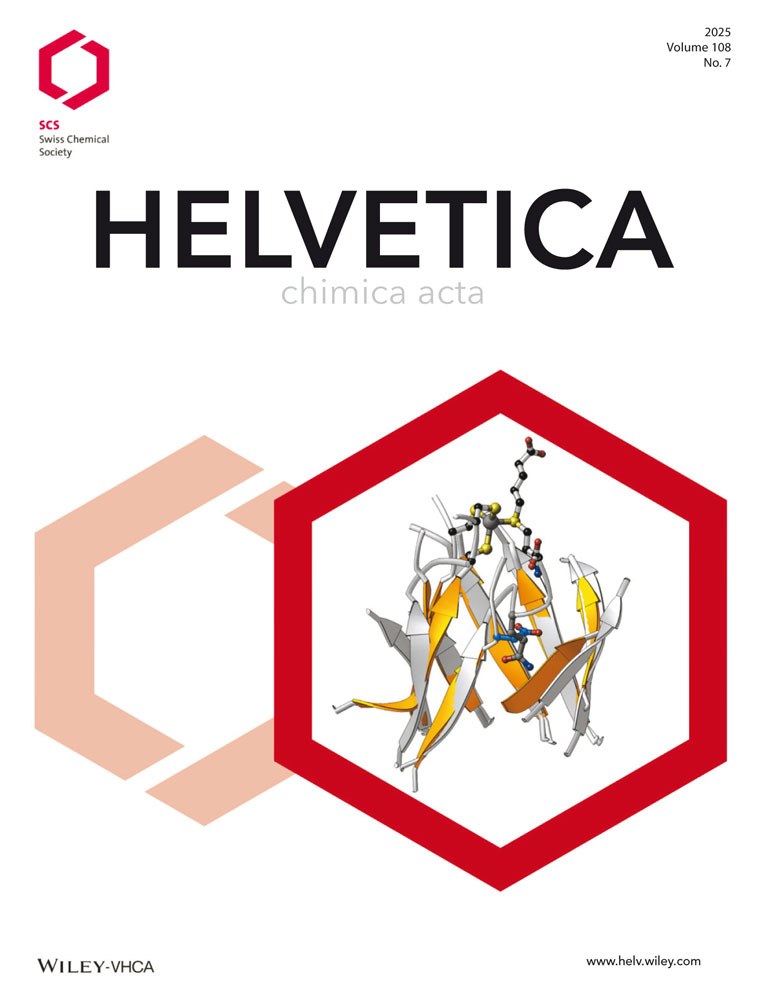Methylene-Bridged Metallocenes with 2,2′-Methylenebis[1H-inden-1-yl] Ligands: Synthesis, Characterization, and Polymerization Catalysis of a Synthetically Simple Class of C2- and C2v-Symmetric ansa-Metallocenes
Abstract
The acid-catalyzed reaction between formaldehyde and 1H-indene, 3-alkyl- and 3-aryl-1H-indenes, and six-membered-ring substituted 1H-indenes, with the 1H-indene/CH2O ratio of 2 : 1, at temperatures above 60° in hydrocarbon solvents, yields 2,2′-methylenebis[1H-indenes] 1–8 in 50–100% yield. These 2,2′-methylenebis[1H-indenes] are easily deprotonated by 2 equiv. of BuLi or MeLi to yield the corresponding dilithium salts, which are efficiently converted into ansa-metallocenes of Zr and Hf. The unsubstituted dichloro{(1,1′,2,2′,3,3′,3a,3′a,7a,7′a-η)-2,2′-methylenebis[1H-inden-1-yl]}zirconium ([ZrCl2(1′)]) is the least soluble in organic solvents. Substitution of the 1H-indenyl moieties by hydrocarbyl substituents increases the hydrocarbon solubility of the complexes, and the presence of a substituent larger than a Me group at the 1,1′ positions of the ligand imparts a high diastereoselectivity to the metallation step, since only the racemic isomers are obtained. Methylene-bridged ‘ansa-zirconocenes’ show a noticeable open arrangement of the bis[1H-inden-1-yl] moiety, as measured by the angle between the planes defined by the two π-ligands (the ‘bite angle’). In particular, of the ‘zirconocenes’ structurally characterized so far, the dichloro{(1,1′,2,2′,3,3′,3a,3′a,7a,7′a-η)-2,2′-methylenebis[4,7-dimethyl-1H-inden-1-yl]}zirconium ([ZrCl2(5′)] is the most open. The mixture [ZrCl2(1′)]/methylalumoxane (MAO) is inactive in the polymerization of both ethylene and propylene, while the metallocenes with substituted indenyl ligands polymerize propylene to atactic polypropylene of a molecular mass that depends on the size of the alkyl or aryl groups at the 1,1′ positions of the ligand. Ethene is polymerized by rac-dichloro{(1,1′,2,2′,3,3′,3a,3′a,7a,7′a-η)-2,2′-methylenebis[1-methyl-1H-inden-1-yl]}zirconium ([ZrCl2(2′)])/MAO to polyethylene waxes (average degree of polymerization ca. 100), which are terminated almost exclusively by ethenyl end groups. Polyethylene with a high molecular mass could be obtained by increasing the size of the 1-alkyl substituent.




